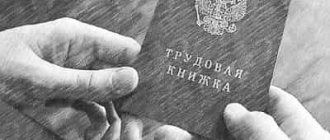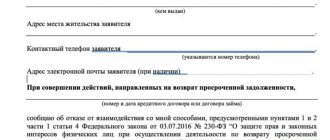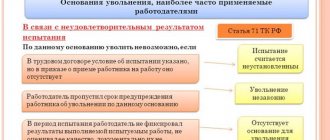Number of days according to legislation and local regulations
Leave is issued according to the provisions specified in Art.
No. 114 TK. It has been in use in its modern edition since 2001. Additions and some editing are constantly being made to it. When determining the amount of vacation pay, they are guided by the average salary. It is calculated for the last 12 months. The countdown does not start from January 1, but from the date when the documents on acceptance into service were signed.
Must spend at least 28 days annually on well-deserved rest according to current Russian legislation. If management has the desire, paid well-deserved leave is issued for a longer period.
The number of days and the specifics of their design are determined by the parameters of the collective agreement and orders adopted within the company. Additionally, parameters are sometimes specified in a personal agreement with each employee.
Expenses for vacation pay are not taken into account when assessing profits tax. Contributions to the insurance fund and personal income tax are not withheld from them.
Concept and types of vacations
What is a vacation? In the most general understanding, we can say that vacation is a period of rest, a break from work, provided to an employee, paid by the employer, the organization in which the employee works.
During work, an employee uses different vacations:
- annual basic paid leave (Article 114 of the Labor Code of the Russian Federation);
- additional holidays (Articles 116 - 119 of the Labor Code of the Russian Federation);
- paid and unpaid study leave (Articles 173 - 176 of the Labor Code of the Russian Federation);
- leave without pay (Article 128 of the Labor Code of the Russian Federation), which is usually called leave at one’s own expense.
Leave is provided to all employees, including:
- working part-time (Part 2 of Article 287 of the Labor Code);
- seasonal workers (Article 295 of the Labor Code);
- persons with whom a fixed-term employment contract has been concluded for a period of up to two months (Article 291 of the Labor Code);
- homeworkers (part 4 of article 310 of the Labor Code of the Russian Federation);
- remote workers (part 2 of article 312.4 of the Labor Code).
At the same time, leave is not granted to a person who performs work on the basis of a civil contract (paragraph 4, part 8, article 11 of the Labor Code of the Russian Federation).
During the vacation, the employee retains his place of work (position) and average earnings (Article 114 of the Labor Code of the Russian Federation).
How to calculate the number of days of annual basic paid leave?
Annual basic paid leave lasting 28 calendar days (Part 1 of Article 115 of the Labor Code of the Russian Federation) is guaranteed by Part 5 of Article 37 of the Constitution of the Russian Federation and is provided to the employee for each working year (Part 1 of Article 122 of the Labor Code of the Russian Federation) based on the vacation schedule.
The duration of the working year is calculated from the date of entry into work. For each month of the working year, the employee is provided with 2.33 calendar days (28 calendar days / 12 months) of annual basic paid leave.
Average daily earnings (vacation pay) are calculated for the last 12 calendar months by dividing the amount of accrued wages by 12 and then by 29.3 (this is the average monthly number of calendar days).
If the employee has worked for less than 12 months, the average daily earnings are calculated using a more complex formula. In this case, the average monthly number of calendar days (29.3) is multiplied by the number of full calendar months worked by the employee.
The resulting value is added to the number of calendar days worked in incomplete calendar months. The amount of actually accrued wages for the billing period (that is, for a period of less than 12 months) is divided by the final number.
This formula applies, for example, if an employee wants to go on vacation after working for 6 months with a new employer.
Annual basic paid vacations, the duration of which exceeds 28 calendar days, are called extended basic vacations (Part 2 of Article 115 of the Labor Code of the Russian Federation). Such holidays are provided:
- for employees under 18 years of age - 31 calendar days (Article 267 of the Labor Code of the Russian Federation);
- for disabled people - at least 30 calendar days (Part 5, Article 23 of the Federal Law of November 24, 1995 N 181-FZ);
How many days is “northern” vacation according to the law?
How many days does a northerner's vacation last? Usually more than for non-northern workers. After all, “northerners”, firstly, are provided with basic annual paid leave - of standard duration or extended in the above cases. And secondly, they are granted additional leave (Article 321 of the Labor Code of the Russian Federation). For workers who work:
- in the Far North - 24 calendar days;
- in areas equated to the regions of the Far North - 16 calendar days;
By the way, both regular annual paid vacations and extended, as well as additional “northern” vacations can be provided to employees in advance (Article 122 of the Labor Code of the Russian Federation).
This is important to know: Postponement of leave due to family circumstances
How many days of vacation are required under the labor code in 2021?
A vacation of 28 days is required per year. This provision is enshrined in Art. No. 115 of the same document.
Home » Other »
Loading…
Question for experts: How many days of vacation per year are required by law? Does it matter where you work in a state-owned enterprise or a private one?
Sincerely, ***KSYUSHA***
Best answers
According to the Labor Code, Article 115. Duration of annual basic paid leave. Annual basic paid leave is provided to employees for a duration of 28 calendar days. Article 122.
Procedure for granting annual paid leave Paid leave must be provided to the employee annually. The employee has the right to use leave for the first year of work after six months of continuous work in this organization.
By agreement of the parties, paid leave may be granted to the employee before the expiration of six months.
Leave for the second and subsequent years of work can be granted at any time of the working year in accordance with the order of provision of annual paid leave established in the given organization.
if you worked for a whole year - 28 days. If you just arrived - in six months you will be entitled to 2 weeks, in another six months another 2 weeks
Xun - leave is due in any case - be it state or private - labor law has NOT BEEN CANCELED!!! !and the number of days - Maya wrote correctly - is either 28 at once or 2 times for 2 weeks!

The duration of the annual main and additional paid leaves of employees is calculated in calendar days and is not limited to a maximum limit.
Non-working holidays falling during the period of annual main or annual additional paid leave are not included in the number of calendar days of leave. The number of vacation days also depends on the profession.
The role where you work is for the government. enterprise or private - does not play.
does not depend on the type of enterprise. further according to the Labor Code.
Depends on the region, here, near the Arctic Circle, vacation is 58 days (the main one is 28 days, the rest is additional), additional days to vacation for hazardous conditions (work related to acids, petroleum products, welders) for each profession a certain number of days.
At least 28 calendar days.
In some states In institutions, the number of vacation days is greater.
28 days in addition to what is written in the count. contract (depends on the specifics of the work and harmfulness) and does not matter at which enterprise you work (state or private)
Federal Law of 05/08/1994 N 3-FZ “On the status of a Member of the Federation Council and the status of a deputy of the State Duma of the Federal Assembly of the Russian Federation”
Article 28. Annual paid leave of a member of the Federation Council, deputy of the State Duma1. A member of the Federation Council and a deputy of the State Duma is granted an annual paid leave of 42 calendar days.
How many days of vacation are allowed per year?
Expert opinion
Novikov Oleg Tarasovich
Legal consultant with 7 years of experience. Specializes in criminal law. Member of the Bar Association.
Weekends falling within the vacation period are taken into account when calculating its duration and are subject to payment. Let's explain with an example.
Manager Ivanov A.K. wrote an application for leave for the period from June 18 to June 24, 2021.
June 24 and 24 are days off. Accordingly, the employee must be given leave for 7 days and all 7 days must be paid.
An employee does not have to use all 4 weeks of his/her allotted vacation at one time. Leave can be divided by agreement between the employee and the employer. The division of vacation into parts according to the Labor Code of the Russian Federation must be carried out in such a way that the duration of at least one of the parts is at least 14 calendar days (Article 125 of the Labor Code of the Russian Federation). If this condition is met, the duration of other parts of the vacation can be an arbitrarily small number of days, including 1 or 2 days.
Minimum number of vacation days
Vacation is a period of rest during which a person retains his job. The number of paid vacation days is regulated at the legislative level.
The number of vacation days according to the Labor Code is 28 calendar days per 1 working year. The employer is obliged to send the employee on vacation every year.
In exceptional cases, you can postpone your vacation to the next year. This is done only with the consent of the employee, and only once.
That is, the employer does not have the right not to send an employee on vacation for two or more years in a row, even if the person is not against it.
The sequence of vacations is determined by the schedule drawn up for each year. The schedule is mandatory for execution by both the employee and the head of the company. All changes to the approved schedule are made only by agreement of the parties.
We suggest you read: Where to go if maternity benefits are not paid
In addition to the main vacation, mandatory additional vacations are provided:
- paid;
- unpaid.
The employer cannot refuse to provide these leaves to the employee.
Such leave may be granted:
- For length of service;
- For working in special and harmful conditions;
- Employees with disabilities;
- Employees who have not reached the age of majority;
- Employees with certain titles and benefits.
All additional holidays are prescribed in the Labor Code of the Russian Federation.
As mentioned above, the number of paid vacation days is 28 calendar days. This amount is given to the employee for 12 months of work.
The law provides that a person has the right to full leave after six months of work, but there is also a provision under which an employee can receive full leave earlier, in agreement with the employer.
Moreover, the legislator does not stipulate that leave should be granted in proportion to the time worked.
Note! The case when the employer begins to manage the employee's vacation period only after completing the probationary period is contrary to the law.
The legislator allows not to take the entire vacation at once, but to split it into parts. This is done subject to the following conditions:
- one of the vacations must be 14 days;
- the remaining part can be divided as desired, even one day at a time.
Thus, the main vacation can be divided into 15 parts.
If an employee expresses a desire to split his vacation into parts when drawing up a schedule, then in the future he goes on vacation without further informing the employer, i.e. He doesn’t need to write a statement, even if he goes on vacation 15 times according to schedule.
But if the schedule indicates 28 days as a single period, and during the year a person decides to divide his vacation, he will have to agree with the administration of the enterprise.
And if they do not reach mutual understanding on this issue, the employee will have to rest in the manner indicated in the vacation schedule.
After termination of the employment contract, the employer must take into account his vacation when making final payments to the employee. In this case, there may be the following options:
- payment of compensation to a person for days of unused vacation;
- deduction for vacation taken in advance.
The Labor Code establishes how many days of vacation are due for each month of work. For one full month of work, 2.33 days of vacation are provided (28 vacation days / 12 months of the year).
Thus, in order to find out how many days of vacation are supposed to be compensated, or, on the contrary, withhold 2.33, multiply by the number of months for which the employee did not take vacation, or who took time off in advance.
In this case, the calculation is carried out according to the following rules:
- if the remaining days are less than 15, then the month is not counted at all;
- if the balance is 15 or more days, then it is rounded up to the whole month.
Compensation is paid for all vacation periods, regardless of the statute of limitations.
All employers are required to provide their employees with a certain period of rest, that is, vacation. The number of days by law is 28 calendar days.
This vacation can be divided into several parts, provided that the duration of one of them is 14 days or more.
The length of vacation is determined at the legislative level, and the employer has the right only to increase it, but not to decrease it.
Current as of: December 28, 2021
Every person working under an employment contract has the right to leave (Part 5, Article 37 of the Constitution of the Russian Federation, Article 21 of the Labor Code of the Russian Federation). Vacation refers to the employee’s rest time, i.e. during this period he is released from performing his job duties and has the right to use this time as he sees fit (Articles 106, 107 of the Labor Code of the Russian Federation).
Paid leave is provided to the employee annually (Article 122 of the Labor Code of the Russian Federation). For the period of the next vacation under the Labor Code 2021, the employee retains his place of work (position), as well as his average earnings (Article 114 of the Labor Code of the Russian Federation). That is, the vacation is paid at the expense of the employer.
At the same time, leave is not granted to persons with whom civil law contracts have been concluded (Article 11 of the Labor Code of the Russian Federation).
As a general rule, in accordance with the Labor Code of the Russian Federation, annual paid leave is granted to an employee for each working year. Such a year is counted from the date the employee starts working, and not from January 1 (Article 123 of the Labor Code of the Russian Federation).
As for the first year of work with a new employer, the employee has the right to use vacation after 6 months. But by agreement with management, a newly hired employee can go on vacation earlier (Article 122 of the Labor Code of the Russian Federation).
If an employee is going on vacation as scheduled, then there is no need to take an application from him for another vacation.
In this case, it is necessary to send him a notice of vacation 2 weeks before the start of the employee’s vacation or earlier against signature (Article 123 of the Labor Code of the Russian Federation).
Limited Liability Company LLC "Kaleidoscope"
Leading engineer Kungurov I.S.
Annual paid leave is a general concept that includes all types of paid leave to which an employee is entitled during one working year. It is important that the employee is registered with the company under an employment contract.
When determining length of service for leave, it is important:
- Do not confuse the working year and the calendar year
The calendar year is stably defined from January 1 to December 31 and does not change.
The working year is individual for each employee, as it implies 12 months of continuous work with one employer (clause 1 of the Rules on regular and additional leaves).
Thus, the report of the first working year begins from the date of commencement of work for a particular employer.
All subsequent working years will begin on the day following the end of the previous working year.

In addition, the working year may change when certain periods are excluded from the length of service giving the right to annual paid leave.
- Correctly determine the periods that are included in the length of service and give the right to annual basic paid leave
Let's take a closer look at such periods and see how to take them into account.
- Remember that when an employee is transferred from one organization to another, the vacation period is not preserved
To receive leave, the length of service must be continuous with one employer.
Let's say an employee worked for Company A from February 11, 2019 to June 10, 2021. On June 11, 2021, he was accepted by transfer to Company B. From what date should the first working year in Company B be calculated? From June 11, 2021. And it will last until June 10, 2021.
- Don’t forget that you don’t need to count your work experience with your previous employer.
Upon dismissal, all payments are made to the employee, including compensation for unused vacation.
When determining the duration of leave and the amount of payments, length of service is taken into account. It is calculated based on the entries made in the work book. This includes not only the immediate periods when the citizen worked. But most of the time he is obliged to fulfill his direct official duties.
The periods when it is officially permitted not to work are taken into account, but the place remained assigned to him by law. This happens in the following situations:

participation in training camps organized by the Ministry of Defense- undergoing a medical examination or examination, including participation in medical examinations
- treatment as part of military registration
They take into account time periods when the employee did not directly work, but the legislator obliges them to be taken into account. These include:
- membership in an election commission at any level
- participation in any stage of the investigation under a subpoena
- time spent on advanced training courses, training
- days off after donating blood
It is prohibited to take into account the following time periods:
- absences from work without good reason
- child care after the end of maternity leave guaranteed by the state
The presence of these time periods will reduce the parameters of the working year. Because of this, the month in which a citizen can go on vacation will shift.
Additional paid leave: cases of provision and payment
Additional leave is provided without fail in situations provided for by the Labor Code of the Russian Federation and other federal laws:
- workers employed in hazardous and (or) hazardous industries;
- working in the Far North and similar places;
- minors;
- disabled people;
- workers with irregular hours;
- working in the fields of sports, education and medicine;
- for certain types of work of a special nature;
- employees of government agencies for military and regulatory purposes;
- a circle of people for whom leave is compensation (victims in Chernobyl, Semipalatinsk, etc.).
Additional holidays may also be established by internal regulations.
Articles on the topic (click to view)
- Fine for late payment of vacation pay
- What to do with unused vacation
- What to do if your employer does not pay vacation pay
- How long after employment is vacation allowed?
- Is maternity leave taken into account when calculating pensions?
- Accounting for compensation for unused vacation
- Dismissal while on maternity leave
If there are additional vacation days, they are summed up in the year with the main vacation to calculate the total duration of annual vacation and the amount of payment for vacation.
Annual paid leave: how many days
According to the Labor Code of the Russian Federation, annual paid leave in normal cases is 28 days a year. During the year, the employee must take part of this period off for a total period of 14 days. The remainder can be used in any way you wish, including individual vacation days.
In some situations, for example, depending on the geographical location of the place of work or due to additional benefits provided to the employee himself, annual paid leave may be increased.
For example, annual leave in 2021, according to the law, is provided to employees under the age of 18 - 31 days a year, working disabled people - at least 30 calendar days, teaching staff - 42 or 56 days, scientific workers with the status of Doctor of Science - 48 days , and candidates of science – 36 working days.
Period of provision of annual basic paid leave
As follows from all of the above, providing leave to an employee is the obligation of the employer, which he must strictly observe. But sometimes situations arise when an employee cannot or does not want to go on vacation.
In this regard, you need to remember that monetary compensation for unused vacation is prohibited by law until the employee is dismissed. The period during which the employee was not on vacation cannot be more than two years.
Expert opinion
Novikov Oleg Tarasovich
Legal consultant with 7 years of experience. Specializes in criminal law. Member of the Bar Association.
However, even in this case, accrued vacation days do not expire; another question is that for the employer such delays are fraught with sanctions from the labor inspectorate.
Because of this rule, a double situation may arise: the employer is obliged to send the employee on leave, even if the latter does not ask for it. Of course, such issues also need to be agreed upon.
Moreover, some categories of employees must take vacation every year. This applies to workers under the age of 18, as well as employees whose activities are carried out in dangerous or harmful working conditions (Article 124 of the Labor Code of the Russian Federation).
This is important to know: How is maternity leave paid for a working woman?
Duration
In 2021, the minimum amount of annual paid leave is 28 calendar days. Certain categories of workers (teachers, doctors, police officers, etc.) are granted extended leave.
The law on vacations also provides for additional vacations under the Labor Code:
- for work with the VUS – 7 days;
- irregular schedule – 3 days;
- for a special character - determined by Decrees of the Government of the Russian Federation.
The new law on vacations in 2021 affected civil and government employees; amendments were made by the Federal Law “On Amendments to Art. 45 and 46 Federal Law “On the State Civil Service of the Russian Federation. Now the vacation of these workers has been reduced to 30 days, regardless of position. Previously it was 35 days.
The calculation of additional days for long service leave has also changed:
- from 1 to 5 years – 1 day of vacation;
- from 5 to 10 – 5 days;
- from 10 to 15 – 7 days;
- over 15 – 10 days.
Previously, the rule was 1 year – 1 day.
Additional leave for employees who are not on regular workdays is a minimum of 3 days, and the maximum is determined personally by the employer.
Conditions for calculating material compensation and assistance
Cash compensation for unused vacation is applied upon dismissal. The Labor Code gives the right to compensation for part of the vacation exceeding the minimum amount of vacation.
When summing up vacations or transferring vacations to another working year, compensation can replace parts of vacation exceeding 28 calendar days. Replacing part of the vacation is not the obligation of the parties to the employment contract, but only an obligation, therefore the employer has the right to refuse.
Upon termination of the employment relationship with the employer, the employee receives compensation for vacation not taken; the amount is equal to vacation pay. You don’t have to take compensation, but then you’ll have to take a vacation first.
Conclusion
Currently in the State Duma there are bills on compensation by employers for the expenses of their employees on vacation at resorts in the Russian Federation and on replacing parts of the vacation of state and civil servants with monetary compensation. But for now these are only projects and it is not known whether they will become law. Therefore, it makes no sense to talk about them yet.
To date, labor legislation has not undergone any significant changes for a larger number of workers, regarding vacations. The employee can safely go on vacation this year.
Unfortunately, employers very often violate labor laws, especially regarding the provision and payment of vacation. If the rights of an employee are violated, you must contact the labor department.
In order not to create problems for themselves in the future, the parties must comply with the civil and labor laws of the country.
If you haven't worked for a year
Even a newly hired employee can go on vacation. Within six months after official employment. Even earlier, it is possible to get leave only by mutual agreement, but the law does not force the manager to do this.
If unfulfilled days remain after dismissal, appropriate compensation is paid. This rule applies even when the employee has only worked for a few months. All the same, during this time he accumulated at least a few days of well-deserved rest, which he was unable to take advantage of.
We invite you to read: Dismissal of a pregnant woman under a fixed-term employment contract: important nuances
A special formula is used for payment. When calculating it, it is necessary to take into account length of service, other basic parameters and nuances.
An employee can go on a full rest in six months. This norm is specified in Art. No. 122 TK. The same article defines categories for which a temporary break in work according to the law may occur even earlier. These include:
- pregnant women
- employees who have not yet reached adulthood
- adoptive parents, if children are less than 3 months old
- part-time workers (by law, they must simultaneously rest at their main place of work and at the position they hold part-time)
- men when their official spouses are on maternity leave
According to the law, from the second year of continuous work, vacation must be provided to him in accordance with the schedule. At each enterprise it must be approved by mid-December. It is compiled for the next annual calendar period. The calculation method used is simple, anyone can master it.
The procedure for granting targeted leaves
The main purpose of targeted leaves is to satisfy certain needs due to the occurrence of a specific event. The intended purpose of such vacations is their main difference from other varieties. A vacation period is provided to a worker to perform a specific function:
- Preparing for motherhood, supporting the health of the pregnant woman and baby until his birthday;
- Forming a favorable soil for the development of a newborn and ensuring proper care for him;
- Receiving additional education without stopping work;
- Organization of high-quality and complete rest in case of part-time work;
- Other socially oriented functions.
These rest periods are provided to all employees upon the occurrence of a suitable event in their lives. It does not matter where the citizen works, what position he holds, or how long his length of service in his current position is.
An employee, going on a targeted leave, can be confident that he will retain his job and, in most cases, the average salary level.
Cases when vacation is paid are stipulated by the Labor Code of the Russian Federation. Also, additional payments can be introduced by acts approved within the company, as well as by an employment agreement concluded at the employment stage.
The provision of targeted vacations has no connection with annual labor leave, which is issued for each year worked in a number of days not less than approved by the code. Target periods of rest are provided in addition to basic leave. It is not allowed to transfer targeted leave to another period, as well as to pay monetary compensation in return. If an employee does not use the allotted leave upon the occurrence of a necessary event, the right to it is lost.
It is impossible to receive money in return for unused days of targeted rest even after dismissal. If the main labor leave has a specific minimum duration, then the target leave does not have this parameter. The duration may vary depending on the type of holiday provided. The time spent on targeted leave is included in the citizen’s length of service.
Example of calculating vacation days
For clarity, we will analyze the example in detail, taking into account the basic points that may arise.
Let's say that an employee got a job on April 3, 2021. On September 1, 2019, he decided to quit. I spent 70 days on my main vacation; in 2018 I took an additional 20 days at my own expense. In total they worked 40 months and 28 days.
From here, vacation days at your own expense are deducted, of which there are more than 14. It costs 6 days to delete. Therefore, it turns out to be 40 months and 22 days. The period should be rounded to the nearest month. This is done less or more depending on whether half of the month has been worked or not. In our example - 41 months.
28/12 * 41. Rounding, we get 96 days. In practice, only 70 are used. So 26 days remain unsold. For them, the employee is guaranteed a monetary payment upon dismissal.
Duration of vacation including weekends and holidays
It is necessary to take into account how many holidays and additional days off there were during the vacation. The duration increases by the amount of holidays. True, they are not paid.
A well-deserved annual rest may be more than the minimum not only for those who find themselves in hazardous work. The same privileges apply to employees of enterprises located in the Far North and in areas similar to this harsh climatic region.
They are guaranteed extended and paid well-deserved rest every year. Depending on the nature of production and the specific region, its duration varies from 16 to 24 days.
How long is an employee’s vacation, including weekends and holidays?
Weekends falling within the vacation period are taken into account when calculating its duration and are subject to payment. Let's explain with an example. Manager Ivanov A.K. wrote an application for leave for the period from June 15 to June 21, 2021. June 20 and 21 are days off. Accordingly, the employee must be given leave for 7 days and all 7 days must be paid.
Unlike regular weekends, holidays and non-working days are not included in the duration of vacation and are not paid (Article 120 of the Labor Code of the Russian Federation). Let's go back to the example above. If Ivanov A.K. writes an application for June 8-15 - 8 calendar days, only 7 calendar days will be counted and paid for vacation. Because June 12 is a holiday (Article 112 of the Labor Code of the Russian Federation).
Additional days from management
According to the Labor Code, management has the right to provide an employee with additional days of vacation for special merits and success in production. Its terms are established by internal acts and regulations. It is enough to register them in:
- agreement
- rules defining the current routine
The management can determine for itself how much rest an employee will have in any position he occupies. The only condition is the obligation to pay vacation pay.
Extended vacation
They are given the opportunity to have a well-deserved rest throughout the year more than others. For them, extended vacation is not determined by management in internal documents, but at the legislative level.
Table 1. The right to have additional rest.
| Persons | Duration, days |
| Minor employees | 31 |
| Disabled people of all groups | 30 |
| Teachers | from 42 to 56 (its duration depends on the type of educational institution and the position of the teacher) |
| Doctors of Science who are employees of budgetary institutions | 48 |
| Scientists who are employees of budgetary institutions and have a PhD degree | 36 |
| Employees of chemical and defense industries | from 30 to 40 depending on experience |
| Doctors and nurses facing the risk of contracting AIDS | 36 |
| Civilian government employees | from 30 (the number increases due to length of service) |
| Employees of the Investigative Committee and the Prosecutor's Office | 30 (the period for travel to the vacation spot and back is added to this) |
Art. 116 of the Labor Code establishes leave of special duration for:
- employees involved in industrial production with harmful and/or potentially dangerous conditions
- with irregular working hours
- when performing official duties of a special nature
- for other categories, if extended well-deserved rest is guaranteed by the Federal Law of Russia
Supervisory authorities carefully monitor employers' compliance with the rights of their employees.
Can be divided into parts
When dividing your vacation into two or more periods, you need to adhere to a certain rule. In addition to the main part, which cannot be less than two weeks, the other segment (or segments) of vacation can be divided as you please. For any number of parts, up to one day. Such decisions are not prohibited by law.
The manager is obliged to provide the employee with such a right; he does not have the right to limit the division of vacation, or establish the minimum duration of legal rest for his employee.
Replacement with monetary compensation
A situation is possible when an employee does not have time to take advantage of the vacation allotted to him by law. Then he is entitled to monetary compensation for the part that he did not take time off. But this rule applies only to final dismissal. The employer is obliged to pay the full amount for unused vacation days.
In other situations, it is necessary to go on a well-deserved rest, taking the money and continuing to work is prohibited.
There is one exception to this rule. Money without dismissal is allowed to replace vacation, which is provided to the employee as additional. To do this, you must submit an application to management. It is prohibited to refuse additional days if they were obtained due to harmful or dangerous conditions at work.
You are allowed to withdraw money only for the portion exceeding the established minimum of four weeks. To do this, the employee contacts his superiors with a statement.
Additional leave for hazardous working conditions in 2021
- in harmful and (or) dangerous working conditions, confirmed by workplace certification carried out before January 1, 2014;
- in hazardous working conditions of 2, 3 or 4 degrees or in hazardous working conditions confirmed by a special assessment of working conditions carried out after January 1, 2014.
The employee is required to take a minimum period of 7 days off. A period in excess of the norm can be converted into a monetary equivalent. Please note that not all enterprises allow you to take an additional 7 days off work, so not everyone actually has the right to receive compensation.
This is important to know: Application for maternity leave: sample 2021
Sequence of provision
This procedure is determined by Art. 122 labor legislation. In addition to the annual provision of compulsory leave, it is established that a citizen has the right to it six months after employment. It can be provided even earlier, but only by agreement.
From the second year of work, the employee goes on a well-deserved rest, focusing on a schedule that is drawn up in advance at each enterprise.
In legislation, this concept is described in Article No. 123. The priority is established by a schedule formed at the end of each year. The head of the company or HR department coordinates it with all employees and approves it. The employee must receive information when he is granted rest at least 14 days before it begins. Otherwise, a violation of his rights is recorded.
When drawing up a schedule, you should take into account the desires of the staff and the nuances of the production process. The stable operation of the enterprise should not be disrupted when someone goes on vacation. To achieve this goal, collective agreements often specifically stipulate that only a certain number of employees of a department or division are allowed to go on vacation each month. As a rule, no more than 12% of the total number.
There are several categories whose wishes must be taken into account. These include:
- WWII participants
- labor veterans
- Heroes of Russia and the Soviet Union
- holders of honorary orders
- awarded the sign of honorary donor
- victims of the Chernobyl accident
The approved schedule must be followed by all employees.
Chapter 19 of the Labor Code of the Russian Federation (hereinafter referred to as the Labor Code of the Russian Federation) stipulates that all employees have the right to annual leave while maintaining their average earnings. According to Art.
115 of the Labor Code of the Russian Federation, employees are granted annual leave with preservation of their place of work (position) and average earnings for a duration of 28 calendar days.
Vacations are provided on the basis of a vacation schedule, which is approved no later than two weeks before the start of the calendar year by the employer and is mandatory for both the employer and the employee (Article 123 of the Labor Code of the Russian Federation).
- When drawing up a vacation schedule, it is necessary to take into account the wishes of employees who have the right to vacation at a time convenient for them. Such employees include:
- Since the employees listed above have the right to leave at a time convenient for them, they need to check with them when they plan to go on leave.
- If an employee does not fall under a preferential category, the employer has the right to schedule him a vacation at any time.
We invite you to read: Annual leave of a civil servant
According to Article 125 of the Labor Code of the Russian Federation, by agreement of the parties between the employee and the employer, vacation can be divided into parts, but so that one of the parts of the divided vacation is at least 14 calendar days. The remainder of the vacation is divided into any parts.
However, according to the explanations of officials set out in Letter of the Federal Service for Labor and Employment dated July 17, 2009 No. 2143-6-1, the employer does not have the right to independently decide the issue of not only dividing annual paid leave into parts, but also the duration of these parts.
This issue can only be resolved by agreement of the parties to the employment contract. This norm should be taken into account when drawing up a vacation schedule.
If the employer divides the vacation into parts, he is obliged to check with the employee whether he agrees to divide the vacation.
The vacation schedule is always carefully checked by labor inspectorate employees. If the organization does not have one, an administrative penalty may be imposed on the employer for failure to comply with labor laws in accordance with Art. 5.27 Code of Administrative Offenses of the Russian Federation.
If the employment relationship is concluded after the approval of the vacation schedule, then the vacation is granted according to the rules of Article 122 of the Labor Code of the Russian Federation.
For such employees, the right to leave arises after six months of work, and for some earlier (for pregnant women, minors, donors, etc.).
When vacation approaches, despite the fact that it is time for vacation according to the vacation schedule, the employer is obliged to notify each employee of the start time of the vacation, against signature, no later than two weeks before it starts.
At the same time, the employer determines the forms and methods of notification independently (letter of Rostrud dated July 30, 2014 N 1693-6-1). These may be separate notices to employees, introductory sheets and statements, etc.

Then a vacation order is issued. The order form can be used approved by the Resolution of the State Statistics Committee of the Russian Federation dated January 5, 2004 N 1. You can also use a free form of the vacation order. The employee must familiarize himself with the vacation order against signature.
There is no need to write an application for scheduled leave. An application will only be required if there was no vacation on the schedule. For example, when granting leave to an employee hired in the current year. Or if the vacation is used with the consent of the employer not according to the schedule.
In the working time sheet, vacation days are reflected by the code “FROM” or “09”.
It is also necessary to fill out a personal T-2 card. A note about vacation is made in the personal card in section. VIII.
According to Article 114 of the Labor Code of the Russian Federation, the employee retains his average daily earnings under any work schedule and under any wage system. Average earnings are maintained for all calendar days of vacation.
The number of calendar days of vacation does not include holidays established by Article 112 of the Labor Code of the Russian Federation. Holidays simply increase rest time (Article 120 of the Labor Code of the Russian Federation).
- Formula for calculating average daily earnings:
- For reference:
- If the billing period contains months that are not fully worked out, then the average monthly number of calendar days must be determined by calculation:
- Average daily earnings are calculated by dividing the amount of actually accrued wages for the billing period by the sum of the average monthly number of calendar days (29.3), multiplied by the number of complete calendar months, and the number of calendar days in incomplete calendar months.
- When calculating vacation pay, the average earnings include all types of payments that are provided for by the remuneration system of a given employer (clause 2 of Regulation No. 922):
Social payments not related to the employee’s work activity, for example: material assistance, payment for food, travel, training, etc., are not included in the calculation of average earnings.
Often, employers reward employees by paying bonuses for various indicators. Bonuses based on the results of work over a period of time: month, quarter, half-year, year, etc. Bonuses for completing tasks and volume of work. Various one-time bonuses for personal performance or for holidays and anniversaries.
All these bonuses will participate in determining average earnings, provided that they are provided for by the wage system, that is, provided for by some local regulatory act: regulations on wages, regulations on bonuses, a collective agreement, or other local act.
When determining average earnings, bonuses are taken into account taking into account the specifics established by clause 15 of Regulation No. 922.
Bonuses and remunerations based on the results of the month are included if they are actually accrued in the billing period, no more than one payment for the same indicators for each month of the billing period. Moreover, they will participate in the amount actually accrued, provided that they are accrued in proportion to the time worked in the month.
Bonuses and remunerations for a period of work exceeding one month are also included in determining average earnings if accrued in the billing period, no matter for which they were accrued.
For example: An employee goes on vacation in July 2021. The calculation period for determining average earnings will be from July 2021 to June 2021. In July 2021, the employee was awarded a bonus for the 2nd quarter of 2021. Since the fact that the bonus was accrued in July 2021 will fall within the billing period, this bonus will participate in determining the average earnings.
These bonuses will be taken into account depending on the duration of the period for which they are accrued; if the period for which they are accrued does not exceed the duration of the billing period, then the premiums actually accrued in the billing period for each indicator are taken into account, and if the period for which they are accrued, exceeds the duration of the billing period, then premiums are taken into account in the amount of the monthly portion for each month of the billing period.
For example: An employee goes on vacation in July 2021. The calculation period for determining average earnings will be from July 2021 to June 2021.
In this case, the accrued bonus must be taken into account when determining the average monthly earnings, that is, divided by 18 and multiplied by 12.
Bonuses and other remunerations based on the results of work for the year are taken into account in full, regardless of the time of accrual of remuneration, that is, they do not have to be accrued within 12 months of the billing period. Bonuses are awarded based on the results of work for the previous calendar year.
If the bonus for the year was accrued after the start of the vacation, vacation pay must be recalculated taking into account the annual bonus and additional payment must be made (Letter of Rostrud dated 05/03/2007 N 1253-6-1).
Extension or postponement of vacation
By law, it is possible to change the duration of vacation. The employee himself or his employer can initiate this in the following situations:

sick leave- performing public service, for which additional rest is provided
- in case of untimely payment of vacation pay
- in special situations when there is a real threat to the entire work process and there is a shortage of local specialists
In the end, the boss is still obliged to send his subordinate on vacation. And certainly over the next year after the expiration of 12 months, when the subordinate did not go on vacation.
Features of registration of targeted vacations
Maternity leave
The main purpose is to create the necessary conditions for a woman in the last months of pregnancy so that she can bear and give birth to a healthy child, while maintaining her own health, without wasting energy on work. The procedure for provision is regulated by Article 255 of the Labor Code of the Russian Federation.
Only working women who need rest before the difficult process of childbirth and motherhood can take leave. Non-working women do not need such rest, since they do not perform work functions.
To apply for a vacation, a woman must submit:
- A statement in pleading form expressing the desire to go on a prescribed vacation;
- Certificate of incapacity for work from a medical institution.
Vacation registration is carried out by the personnel service immediately before a woman goes on maternity leave - 70 or 84 calendar days before giving birth (the second value corresponds to a multiple pregnancy).
Upon receipt of the documentation provided, the employer:
- Forms order T-6;
- Calculates social benefits.
Holiday to care for the child
The most important type of targeted leave, the purpose of which is to provide the child with proper care and education at a young age. The provision of leave is determined by Article 256 of the Labor Code of the Russian Federation. A person directly caring for a newborn can apply for leave.
Right to leave upon dismissal
Article No. 127 of the labor legislation notes that an employee has the opportunity to use the granted leave even upon dismissal.

Unrealized periods are provided as a single period. An alternative solution is to pay appropriate compensation. This right cannot be exercised when the reason for dismissal was any misconduct.
If the initiator was the employee himself, he has the opportunity to cancel his decision before the vacation ends. This will not be possible if a new person is found in his place.










